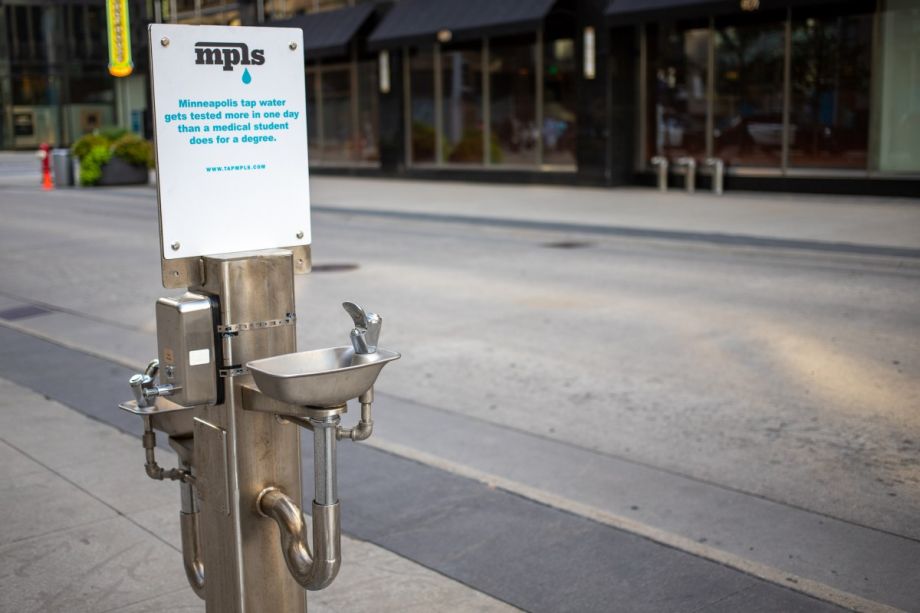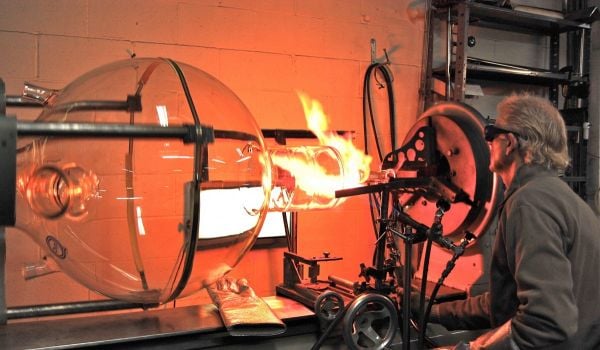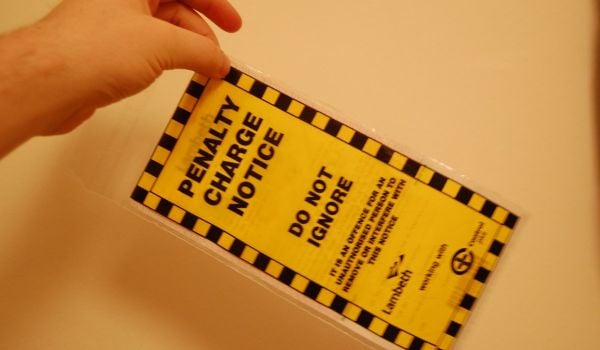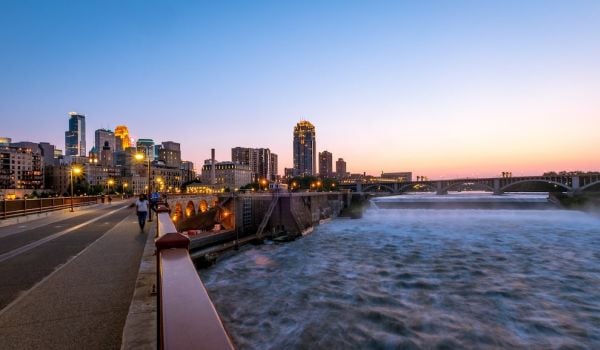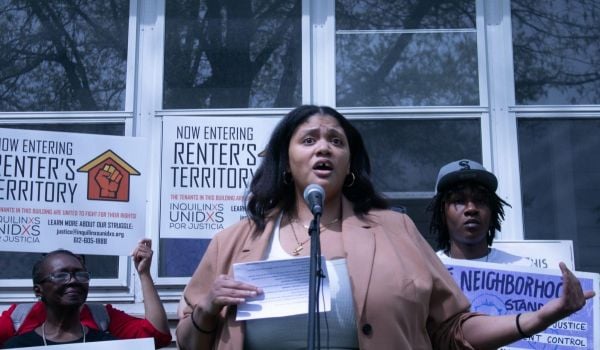Water fountains have been disappearing from public spaces, with one writer lamenting in 2015 that they’re “going the way of pay phones.”
You can still sometimes find publicly accessible fountains in parks, libraries, transit centers, grocery stores, and gas stations. But people might not have time to visit those places to fill up on water, or they were hassled for doing so because they appeared to be without a home. And the warming climate, which causes all of us to sweat, will make more of us feel thirsty.
Making sure water is available to everyone living, working or playing outside will mean rethinking how cities deliver water to the masses. And the pandemic has sped up that change.
Some businesses in downtown Minneapolis closed because of the pandemic, leaving fewer places for people to hydrate. To address that, the City’s Water Treatment & Distribution Services department installed a semi-permanent water fountain downtown earlier this year. “It’s a necessity for people and important to the success of downtown space to have access to it,” said Lisa Middag, a planner with the Minneapolis Downtown Council, the downtown business improvement district that requested the fountain install.
The fountain has been a success. Said Middag, “We have heard anecdotally from people who have used the fountain, that it was beneficial, especially during the hottest part of the year.” But because it is not designed to withstand the unforgiving Minnesota winters, the city plans to store it. They will bring the fountain back next year when the danger of freezing passes.
The initiative builds on one the water department has been running for a few years: bringing portable water fountains to community events so that people can stay hydrated wherever they are. In 2019 alone, the city dispensed 13,162.5 gallons of drinking water at 79 events. “In general, event organizers and attendees are very glad to have a source of free tap water to consume at the events,” said Annika Bankston, who runs the city’s water department.
Similar to Minneapolis’s work, San Francisco announced plans earlier this year to expand water access for its unhoused population by adding permanent taps on the public right-of-way in neighborhoods where people experiencing homelessness tend to gather. The idea came about as the pandemic forced the closure of government buildings and parks, where the unhoused would get water. In some neighborhoods, locked parks were what stood in the way of the unhoused in their quest for water.
“Every sheltered or unsheltered San Franciscan or visitor should be able to walk down the street and hopefully be able to find a park, or a playground, or a drink tap station in a plaza or on a pier or on a sidewalk where they can access free safe, drinking water,” said John Scarpulla, who directs strategic initiatives and partnerships at the San Francisco Public Utilities Commission.
But even if tap water were easy to access, some don’t trust it. Minneapolis, while conducting outreach efforts around its water, found communities of color, particularly those who were born outside of the United States, don’t trust tap water because they used to live in areas where tap water was unsafe to drink. Minneapolis also found bottled water is a status symbol among its youth.
Indeed, Minneapolis water, sourced from the Mississippi River, was unsafe to drink once upon a time because of the presence of untreated sewage; it was the creation of a unified regional government and consolidation of area sewage plants that made Mississippi River water clean and safe to drink.
Kristen Klingler, through her work to reduce sugary drink consumption at the Minneapolis Department of Health, learned about the distrust and avoidance communities of color have with tap water. Minneapolis is home to immigrants and refugees, most of whom are from Mexico and Somalia, who fear Minneapolis water is unsafe.
A 2019 survey conducted by the city, the University of Minnesota Family Medicine and Community Health, the Minnesota Statewide Health Improvement Partnership, and Water Bar, a defunct Northeast Minneapolis nonprofit that raised water awareness, found 65% of Somali residents consume bottled water, and 36% of people who identify as Hispanic or Latino buy bottled water because they don’t feel safe drinking tap. This is on par with what a survey conducted by SOURCE Global PBC found: Black and brown people are less likely to be very confident in their tap water supply compared to white people, and actually increased bottled water consumption during the pandemic.
“[Our Somali and Latino population] were not able to drink tap water [in their homelands] because it wasn’t safe and clean, and so they bring those traditions and those perceptions here. […] So they assume that the Minneapolis tap water is not safe to drink either,” said Klingler, adding that Latino community members who work in construction tended to drink bottled water to avoid the hassle of finding a fountain to refill a reusable bottle.
San Francisco thinks making it easier to access tap water is helping address equitable water access. Shortly after the passage of federal and state legislation requiring schools to install water fountains in their cafeterias, the San Francisco Department of Public Health found in a study that students were more likely to bring their own bottles if their school had a bottle filling station, and that bottled water usage among students was lower at schools that provided them with refillable bottles. San Francisco also has the advantage of sourcing most of its water from the Hetch Hetchy Reservoir in Yosemite National Park, reputed to be so clean that it is exempt from federal filtering and treatment requirements.
Minneapolis, however, is taking its time to come up with a solution. Klingler and her team pointed out that they are in the early stages of understanding how local youth and communities of color interact with tap water, and don’t know what the most effective way is to afford them access. “We didn’t want to rush that process because we didn’t want to just dive right into a solution without really talking with community members about what challenges they were facing,” Klingler said.
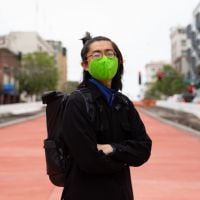
H. Jiahong Pan 潘嘉宏 (pronouns: they/them/佢/他) is a Minneapolis-based introverted freelance journalist who reports primarily on their lifelong passion: transportation issues. Find them on a bus of all types, the sidewalk, bike lane, hiking trail or perhaps the occasional carshare vehicle, camera and perhaps watercolor set or mushroom brush in tow, in your community or state or regional park regardless of season. If you can’t find them, they’re probably cooking, writing, curating an archive of wall art or brochures, playing board games, sewing or cuddling with their cat.

